US State Department Special Briefing by the Director of Policy Planning
2/7/2018
MR HOOK: “…..Our focus is on getting as many countries importing Iranian crude down to zero as soon as possible”
https://www.state.gov/r/pa/prs/ps/2018/07/283669.htm
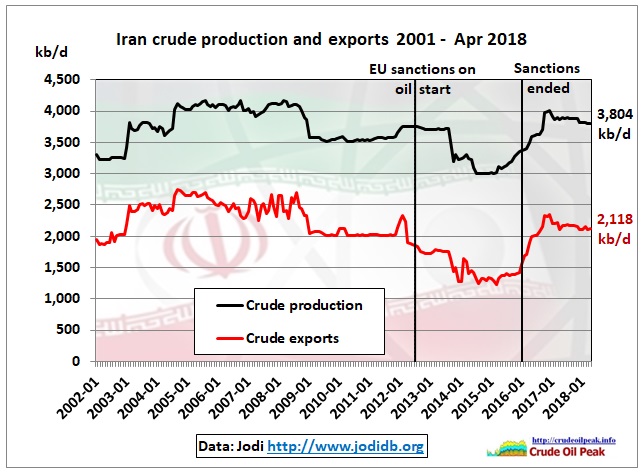 Fig 1: Iran’s crude production and exports
Fig 1: Iran’s crude production and exports
Zero exports? From current levels of around 2.1 mb/d. That’s why Trump asked Saudi Arabia to pump 2 mb/d more
5/7/2018 Saudi Arabia was supposed to pump almost 14 mb/d in 2018
http://crudeoilpeak.info/saudi-arabia-was-supposed-to-pump-almost-14-mbd-in-2018
Now it’s on a case by case basis. Let’s start with South Korea.
South Korea suspends Iranian oil loading in July for first time since 2012: sources
6/7/2018
https://www.reuters.com/article/us-southkorea-iran-oil/south-korea-suspends-iranian-oil-loading-in-july-for-first-time-since-2012-sources-idUSKBN1JW07R
 Fig 2: South Korea’s crude imports from Iran
Fig 2: South Korea’s crude imports from Iran
UN sanctions were lifted on 16 January 2016. We can see that crude imports jumped from 116 kb/d in 2015 to between 300 and 400 kb/d in 2016/17.
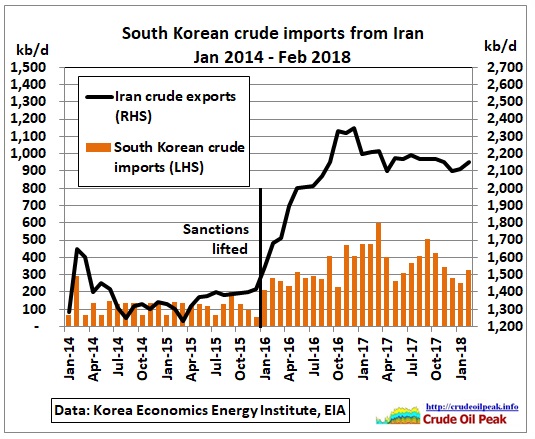 Fig 3: South Korean crude imports vs total Iran’s crude exports
Fig 3: South Korean crude imports vs total Iran’s crude exports
The above graph shows South Korea’s monthly crude imports (brown columns, LHS). For comparison, the black line is the total Iranian crude export (RHS). Note that the right axis is not zero scaled but starts at approximately the level which resulted from the last sanctions. So South Korea filled in an important part of Iran’s export surge after the sanctions were lifted.
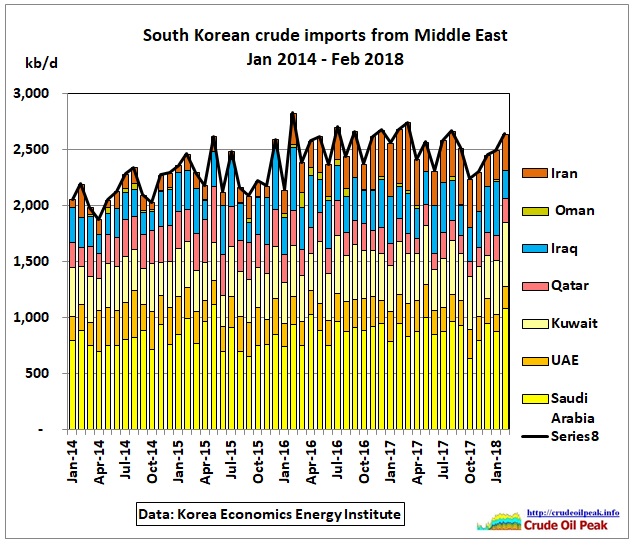 Fig 4: South Korea crude imports by country from Middle East
Fig 4: South Korea crude imports by country from Middle East
This graph is stacked in such a way that it shows Iran’s contribution to South Korea’s imports from the Middle East. We see following import trends between 2014 and 2018:
Saudi Arabia: slightly increasing
UAE: slightly decreasing
Qatar: decreasing after a peak in April 2015
Iraq: increasing
Kuwait: increasing
The next graph shows the long term trends:
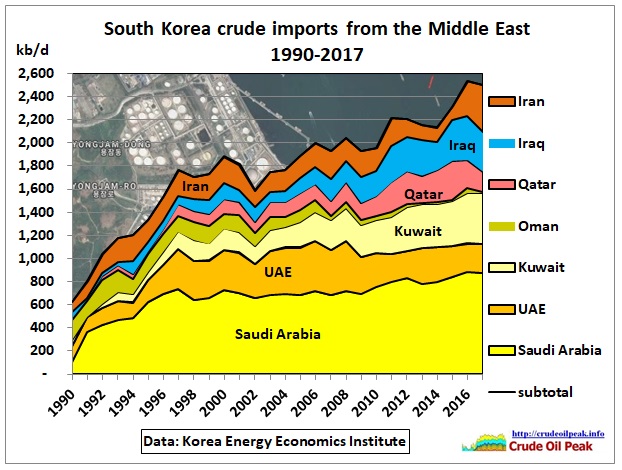 Fig 5: South Korea’s crude imports from the ME
Fig 5: South Korea’s crude imports from the ME
We see the uptick in crude imports from Iran. Saudi Arabia would have to increase exports by 400 kb/d to offset South Korean imports from Iran.
 Fig 6: South Korea’s crude imports from all regions
Fig 6: South Korea’s crude imports from all regions
Around 80% of South Korea’s crude imports come from the Middle East.
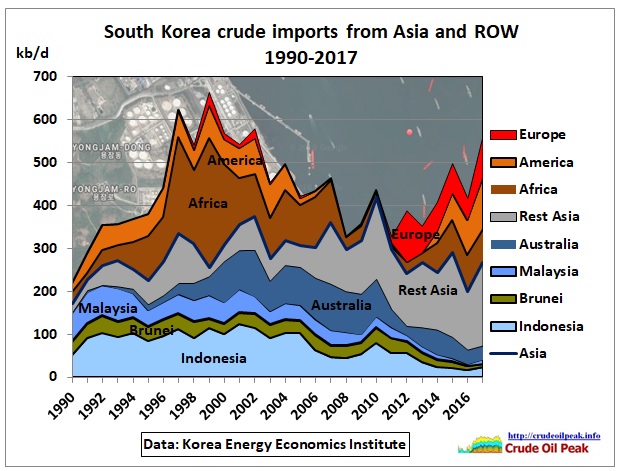 Fig 7: South Korea crude oil imports from Asia and the rest of world
Fig 7: South Korea crude oil imports from Asia and the rest of world
Imports from Asia have peaked. No surprise here as crude oil production in all Asian countries has peaked.
18/6/2018 Peak oil in Asia Pacific (part 1)
http://crudeoilpeak.info/peak-oil-in-asia-pacific-part-1
Increasing imports after 2012 came from Africa, Europe and America, since 2017 from the US.
 Fig 8: South Korea crude imports from the US
Fig 8: South Korea crude imports from the US
Iran’s condensate (for the chemical industry) could actually be replaced by US condensate from US shale oil.
South Korean refineries will know what to do as shown in this article:
South Korea Turns To Kazakh CPC Oil As US Sanctions On Iran Loom
3/7/2018
MOSCOW/SEOUL, July 3 (Reuters) – South Korea has imported four times more CPC Blend crude so far in 2018 than in the same period last year, as the major Asian oil consumer seeks to replace Iranian supplies, shipments data and trading sources said.
The most visible drop in Seoul’s imports from Iran was in May, when purchases fell to 179,444 barrels per day (bpd), the lowest since January 2016, data from the state-run Korea National Oil Corp show.
As Iranian imports have fallen, CPC Blend shipments to South Korea since May have been setting record monthly highs and are set to exceed 284,000 bpd in July, Reuters flows system shows.
CPC Blend, mostly made of Kazakh oil with some crude from Russia’s Caspian fields, is named after the CPC pipeline through which it flows to the Russian Black Sea terminal of Yuzhnaya Ozereyevka. The pipeline is co-owned by U.S. firm Chevron.
CPC Blend is a light, sweet crude oil with about 0.5 percent sulphur content and 46.5 API degrees, specifications putting it at roughly the mid-point between Iranian condensate and Iranian light crude, making it a suitable replacement, traders said.
The blend’s traditional market is Europe, where it is usually mixed with other grades, including Russia’s heavier Urals blend.
But European refiners tend to limit intake of CPC Blend due to its high content of mercaptan [Methanethiol CH3SH], a pungent gas. South Korea’s more modern refineries do not have the same challenges processing mercaptan, market sources said.
South Korea is the fourth biggest importer of CPC Blend so far in 2018, behind Italy, the Netherlands and France.
https://www.rigzone.com/news/wire/south_korea_turns_to_kazakh_cpc_oil_as_us_sanctions_on_iran_loom-03-jul-2018-156170-article/?all=hg2
Let’s have a look at crude oil production in Kazakhstan:
 Fig 9: Kazakhstan crude oil production
Fig 9: Kazakhstan crude oil production
 Fig 10: Kazakhstan’s oil supply forecast by the IEA
Fig 10: Kazakhstan’s oil supply forecast by the IEA
We see that Kazakhstan has reached a bumpy production plateau where slight increases of 50-100 kb/d y-o-y can be canceled out by seasonal fluctuations.
The US trade war against the rest of the world seems to spread to oil:
U.S. Oil Sellers May Look to India as China Tariff War Escalates
7/7/2018
https://www.bloomberg.com/news/articles/2018-07-06/u-s-oil-sellers-may-look-to-india-as-china-tariff-war-escalatesThe Islamic Republic News Agency announces:
China to buy oil from Iran, stops US purchase
Beijing, July 8, IRNA – An executive from China’s Dongming Petrochemical Group, an independent refiner from Shandong province of China, says the refinery has stopped purchase of crude oil from the US and is going to buy crude from Iran.
http://www.irna.ir/en/News/82965505
Chinese Refiner Stops U.S. Oil Imports, Turns To Iranian Crude
9/7/2018
“If China retaliates with tariffs on U.S. crude, that could improve South Korea’s terms of buying U.S. crude…because the U.S. would need a market to sell to,” on analyst, from the Korea Energy Economic Institute.
https://oilprice.com/Energy/Crude-Oil/Chinese-Refiner-Stops-US-Oil-Imports-Turns-To-Iranian-Crude.html
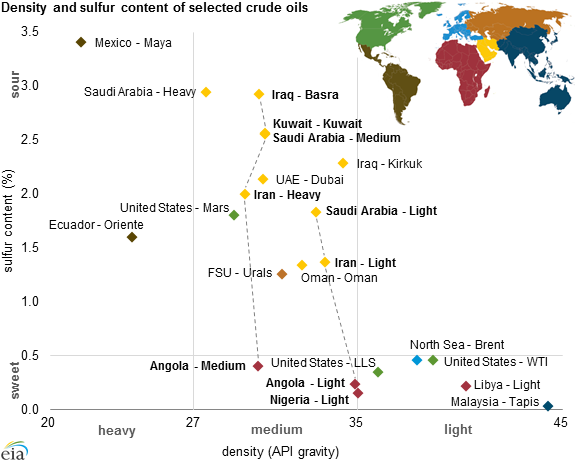
Fig 11: Displacement of Iranian oil by oil grade
https://www.eia.gov/todayinenergy/detail.php?id=21792
Note that US shale oil has an API>45 which is not in the above chart.
Australia’s dependency on South Korea
This post is not academic. Whatever happens in South Korea has a direct impact on Australian fuel imports.
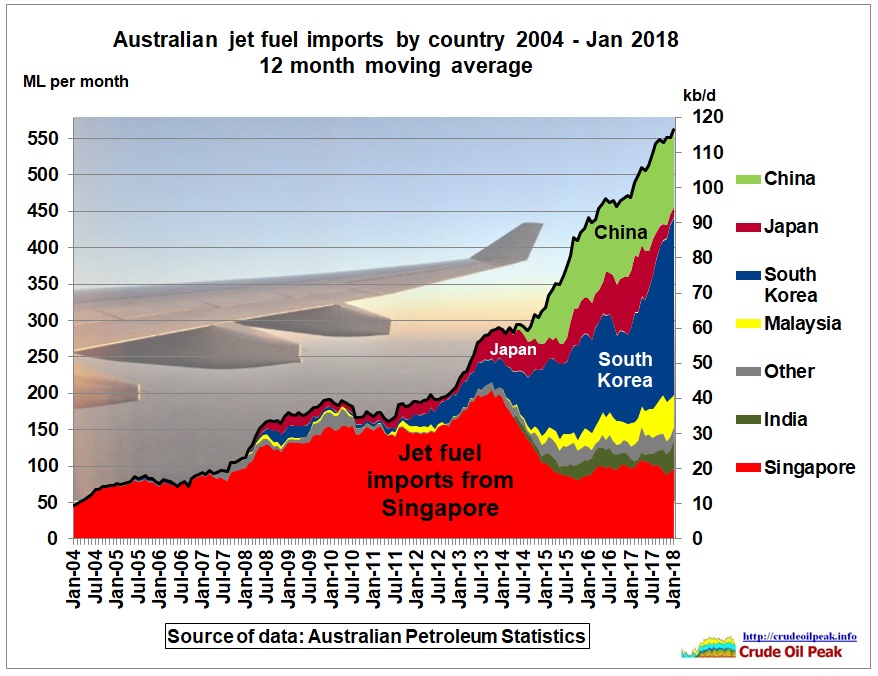 Fig 12: Australian jet fuel imports
Fig 12: Australian jet fuel imports
The Australian government wants to start building a 2nd Sydney airport by the end of the year. No calculations on jet fuel supplies for the next decades have been done.
Conclusion
Replacing Iranian oil will not be straight forward as the parties involved have different interests and oil grade requirements. One thing is certain: as more and more countries are going into peak oil mode any re-direction of oil flows will become more and more tricky. US shale oil production will now also be challenged as it can only replace very light oil and condensates.
Related links
10/5/2018 Update on Australian oil import vulnerability May 2018
http://crudeoilpeak.info/update-on-australian-oil-import-vulnerability-may-2018
29/4/2017 South Korea’s oil trade under threat
http://crudeoilpeak.info/south-koreas-oil-trade-under-threat